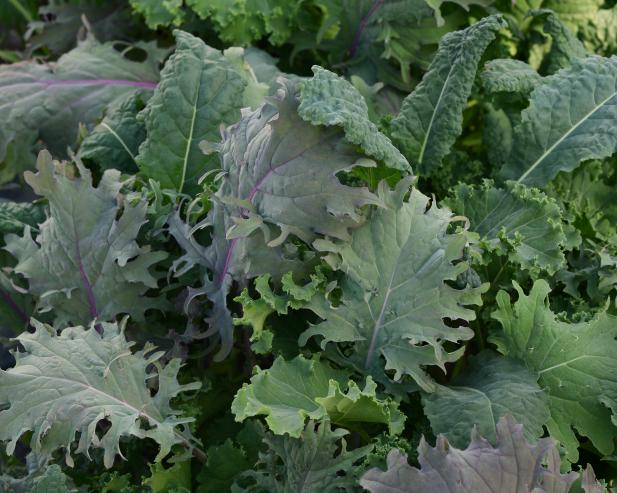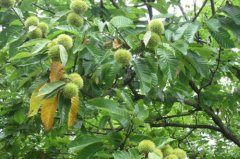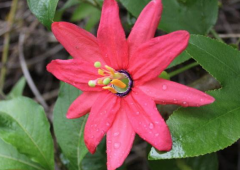When and how to plant kale seeds and what is the watering method?
Because of its nutritious personality, kale is the favorite of vegetables. It has its own dishes, from salads and smoothies to soups and snacks. Kale varieties weave colors and textures into plants that are skillfully integrated into landscape beds or containers. Most importantly, kale is easy to grow. Just plant and water it. It's that simple.
Planting time of kale seeds
Kale is a rape crop, which means it is part of the mustard family. Its cousins include cabbage, turnips, radish, broccoli and cauliflower. Cole crops like cool temperatures, so that people often call them "cold crops". Once the soil is available in spring (six weeks before the last spring frost), they can enter the garden and thrive in winter. Areas 7 to 10.
Kale seed sowing is an early spring tonic, a way to scratch your garden before you can do anything else. When the soil temperature is at least 40 °F, the purpose is to plant seeds or transplant. This is roughly the time when dandelion or forsythia blossoms. Plants are too early and you are at risk of seeds or plants rotting. Continue to plant kale-seeds or transplants-until early summer.
You can also grow kale as a winter crop from late summer to early autumn. The planting time is determined by counting backwards from the time the plant needs to mature (this information is on the seed package). This is equivalent to about two to three months before the first frost. The ideal temperature for planting harvest collard greens? The weather is less than 80 °F and less than 60 °F at night.
Mature kale plants vary in size, but it usually takes 12 "to 36" to reach their full potential. Check your seed bag or plant label to make sure you give the plant enough elbow space. Kale shows colorful leaves with a strong texture, making it a versatile garden performer. Try one of these ideas when growing kale:
Kale is used in traditional vegetarian patches and planted in blocks or rows.
Strategically place kale in your garden as a focus plant.
Tuck it into the flower bed and add texture, edible elements.
Kale can also thrive in pots (with a minimum size of 12 inches). Make sure the container soil is kept moist.
Watering Tips
Water the seedbed or transplant after planting. For spring planting, keep in mind that kale doesn't need as much water in the early shade and cloudy days of the season. As plants begin to take off, they will gradually need more water. The aim is to keep the soil moist during the growing season. Even soil moisture is the secret of tender, delicious leaves. Cover the soil under the plant to help maintain the soil moisture and keep the leaves clean.
With autumn planting, higher air and soil temperatures mean you need to water more than you plant in spring.
Cabbage worm
Although many pests ignore kale, cabbage worms and curls attack plants. If you find a small white butterfly floating around your plant, please pay attention to the cabbage worm. Bt (Bacillus thuringiensis) spray provides an organic strategy to control worms. You can also select small animals by hand and place a birdhouse or birdhouse near your garden to summon insect-eating birds.
Other kale pests include slu and and snails (on seedlings), grasshoppers and cabbage aphids (usually on autumn crops).
To prevent disease from accumulating in the soil, do not plant kale or other rape crops in the same place year after year. On the contrary, the planting site should be filled with non-rape crops for at least two years before planting kale.
How to harvest
Picking kale is simple-simply break the leaves. The bottom or outer leaves of the harvest first retain the tip of the growth, thus maintaining the harvest. With the consistent harvest throughout the growing season, your kale will eventually be like a palm tree, with a bunch of delicious leaves covered with bare "trunks".
Younger leaves are more tender, but older leaves are edible, although they may be more difficult. Cook or bake with older leaves; a young salad or sandwich.

- Prev

When is the history of chestnut planting? How to plant chestnut trees and how to nurse and feed the soil?
Chestnut trees have been growing starch nuts for thousands of years since at least 2000 BC. In the past, nuts have been an important source of human food, used to make substitutes for flour and potatoes. At present, nine species have been planted in temperate regions around the world.
- Next

What kind of plants are passion flowers? What are some common passionflower plants?
Passion flowers are vibrant grapevines native to the Americas that bring tropical flair to your garden. Passion vines have colorful flowers, and some varieties of grapevine produce passion fruit. There are different types of passion vines commercially available, some harder than native varieties
Related
- A course of planting techniques and methods on how to grow carrots
- How to plant the latest tulips?
- Is it better to pick tea in the morning or in the afternoon? When is the best time for tea to be picked? what is the third or fifth tea?
- Launch Yuanxiao Happy combination Haocha + Tea Yuan healthy Taste
- Penghu Tourism "Fireworks 20 Parade with You"
- 2022 West Lake Happiness holds "Digital Revitalization Voucher" and draws iphone13 and laptop.
- Banqiao Fuzhou social houses are designed to change start-up combined with police elimination to create a safe and livable environment
- The convenient measure of "mechanical weeding" in Xinbei has been abused and the Agriculture Bureau has imposed heavy penalties on the illegal land consolidation.
- Changgeng University Joins Hands with Four Memory Factories to Rescue Memory Talent Shortage
- The list of Taiwan's top 100 MVP managers is listed by the Director-General of the Farmers' Association of Sanxia District.

